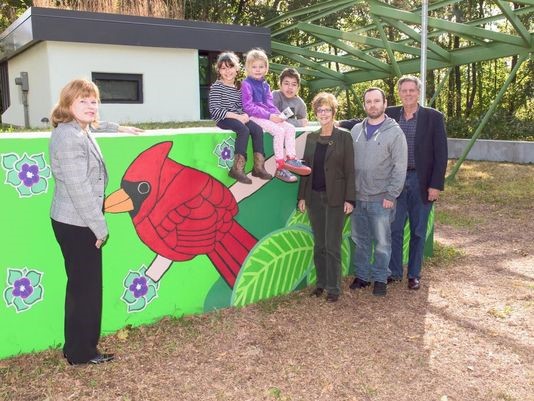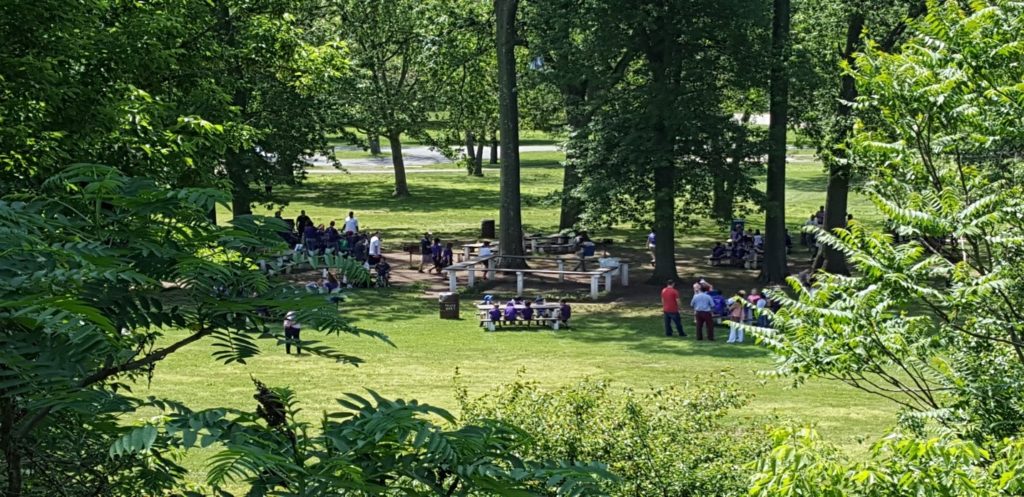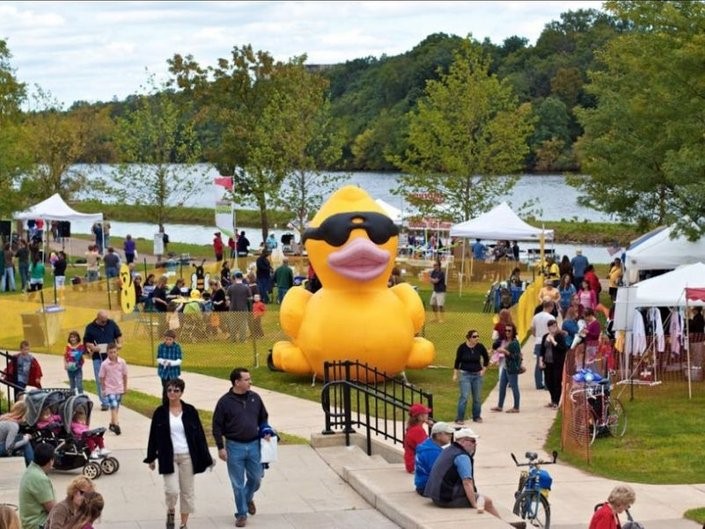Lower Raritan Parks – Ours to Enjoy
Article and photos by Gisela Aspur Chavarria, written as part of the Rutgers Spring Semester 2019 Environmental Communications course
Are you bored at home? If so, go to one of our local parks along the Raritan River and enjoy the outdoors. Highland Park offers various parks and abundant open space and recreation for residents and visitors. One amazing place to visit in Highland Park is the Native Plant Reserve. The reserve has a collection of native flowers, shrubs, vines, and trees, with educational signs for each species (1). The reserve is a fantastic place to drop by and explore nature. It’s also a great place to bring children of all ages to teach them about plants and their importance.
You can also visit the Eugene Young Environmental Education Center in Highland Park which uses art to raise awareness about wildlife and the significance of the Raritan River. In 2014, a mural was unveiled at the Eugene Young Environmental Education Center as part of a project to create artwork to highlight the river, and to make people aware of its beauty, and value (5).

Another extraordinary recreational place along the Raritan River is Donaldson Park which is located in the Borough of Highland Park. The park has boat ramps, kayaking, fishing, sports fields, biking trails, playgrounds, and paved trails (2). The picnic groves in the park are a great place for families to eat and spend quality time with each other.

Similarly, Elmer B. Boyd Park in New Brunswick is an amazing recreational space for community engagement. It provides walking and biking paths, a playground, and a boat launching space. Boyd Park also hosts many community events during the year, including the autumn River Festival, the Hispanic Festival, and the city’s Fourth of July celebration (3). You can also learn about the history of the river through the signage through the park. All of these parks are great recreational places for individuals and families to connect with the river and enjoy the outdoors.

Promoting River Access
But our local parks are important for more than just recreation, as they provide vital access to the Raritan River. River access encourages individuals to develop a relationship with the river and connect to our local environment. By connecting the community with the river, people develop a sense of ownership and care about the river and its future. Visual exposure to natural resources like the Raritan River prompt people to understand the importance of the river and the value it provides for the community.
Recreational activities by the river are wonderful ways in which individuals can connect with the river. Whether you canoe, fish, or walk along the river, access to river recreation inspires people to protect nature and wildlife. Furthermore, recreation creates a caring constituency for healthy rivers, lands, and resources, inspiring the preservation of important places. Thus, it can encourage communities to help control pollution and ensure natural resources are preserved.
Nature and Mental Health
Aside from the pleasure of enjoying activities along the river, recreation by the river can also improve your quality of life. Researchers have shown that exposure to nature is beneficial to people’s mental health, suggesting that accessible natural areas within urban contexts may be a critical resource for mental health in our rapidly urbanizing world (6). Exposure to nature can improve your mood and self-esteem, help you feel more relaxed, reduce anxiety, and help with depression (7). Significantly, a lack of nature experiences may contribute to a range of issues in children. In his book, Last Child in the Woods, Richard Louv described how children are spending less time outdoors and how it could influence not only their health, but also their connection to and support of the natural world. The book spurred national dialogue about the importance of nature.
Ultimately, regardless of where you go along the river, and the park you choose to visit, you can find many ways to connect with the river: you can learn about the importance of plants, have a family picnic, go to a river festival or just take a walk. Our local parks can help you stay fit both physically and mentally while connecting with the river. So, if you are bored at home, go spend some time along the Raritan. See you out there!
Effective communication about the environment is critical to raising awareness and influencing the public’s response and concern about the environment. The course Environmental Communication (11:374:325), taught by Dr. Mary Nucci of the Department of Human Ecology at Rutgers University, focuses on improving student’s writing and speaking skills while introducing students to using communication as a tool for environmental change. Students not only spend time in class being exposed to content about environmental communication, but also meet with communicators from a range of local environmental organizations to understand the issues they face in communicating about the environment. In 2019, the course applied their knowledge to creating blogs for their “client,” the Lower Raritan Watershed Partnership (LRWP). Under the guidance of LRWP Founder, Dr. Heather Fenyk, students in the course researched topics about water quality and recreation along the Raritan. Throughout 2020 the LRWP will share student work on our website.
